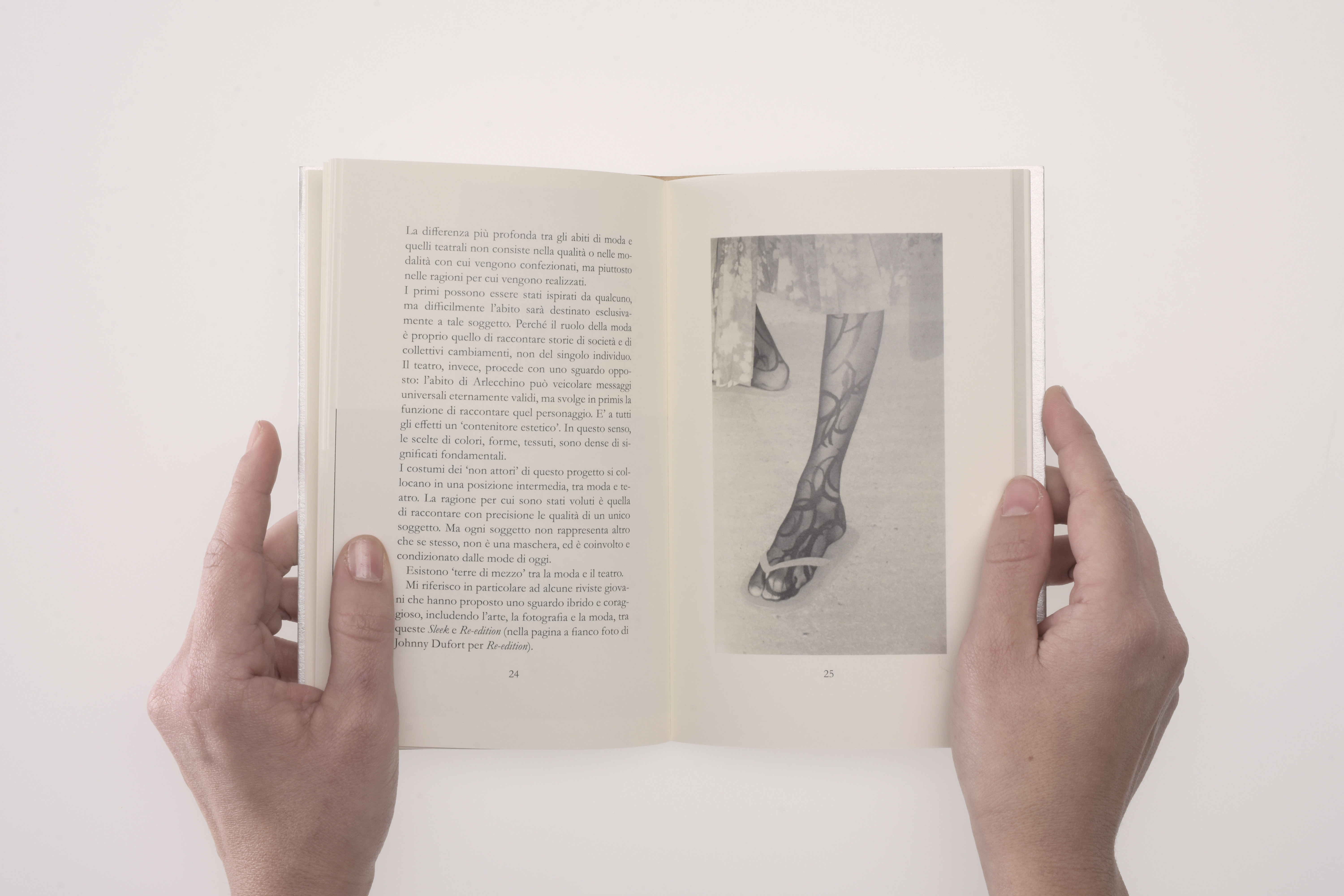70 pp.
with 10 black and white illustrations
thread-sewn softcover
Bolzano Bozen, November 2019
![]()
Il libro è diviso in due parti. La prima contiene tutta la ricerca e la documentazione del lavoro. Include un capitolo sulla storia della bellezza, sulle differenze di gusto, sulla necessità della poesia e su diverse riflessioni su costumi, luoghi, film e fotografia, supportate da riferimenti visivi e teorici. La seconda parte del libro è dedicata esclusivamente alle storie e alle interviste dei "non attori" che recitano nel film. Alla fine del libro è possibile leggere la bibliografia e l'indice dei nomi.
The book is divided into two parts. The first one contains all the research and documentation of the work. It includes a chapter about the history of beauty, the differences in taste, the necessity of poetry, and different thoughts about costumes, places, film, and photography, supported by visual and theoretical references. The book's second part is dedicated solely to the stories and interviews of the “non-actors” who play in the film. At the end of the book, it is possible to read the bibliography and index of names.
with 10 black and white illustrations
thread-sewn softcover
Bolzano Bozen, November 2019

Il libro è diviso in due parti. La prima contiene tutta la ricerca e la documentazione del lavoro. Include un capitolo sulla storia della bellezza, sulle differenze di gusto, sulla necessità della poesia e su diverse riflessioni su costumi, luoghi, film e fotografia, supportate da riferimenti visivi e teorici. La seconda parte del libro è dedicata esclusivamente alle storie e alle interviste dei "non attori" che recitano nel film. Alla fine del libro è possibile leggere la bibliografia e l'indice dei nomi.
The book is divided into two parts. The first one contains all the research and documentation of the work. It includes a chapter about the history of beauty, the differences in taste, the necessity of poetry, and different thoughts about costumes, places, film, and photography, supported by visual and theoretical references. The book's second part is dedicated solely to the stories and interviews of the “non-actors” who play in the film. At the end of the book, it is possible to read the bibliography and index of names.
(7) DIFFERENT POSSIBILITIES
OF HUMAN BEAUTY
Questo progetto è nato in un periodo in cui mi chiedevo spesso cosa
significasse essere belli davvero, mi interrogavo sul perché alcune
persone mi affascinavano più di altre. Si tratta di qualcosa che ha poco
a che fare con la bellezza di un volto, di cui nessuno ha merito, ma
risponde a un altro tipo di bellezza: quello che dipende dall’uso che
facciamo della nostra libertà.
La vera bellezza sta nel
coraggio di indossare la propria immagine con naturalezza, rispondente
al proprio io, senza tentare di assomigliare a qualcos’altro, senza
sottostare a canoni uniformanti. Per raccontare questo progetto ho
scelto sette persone, le ho intervistate, con il desiderio di ribaltare
quello che hanno dentro all’esterno. E non mi ha stupito vedere che la nostra parte migliore coincide con i nostri sogni.
This project came about when I often wondered what it meant to be truly
beautiful. I wondered why some people fascinated me more than others. It has
little to do with the beauty of a face but responds to another kind of beauty:
which depends on the use we make of our freedom.
True beauty lies in the courage to wear one's image naturally, responding to
oneself, without trying to resemble something else, without submitting to
uniforming canons. To narrate this project, I chose seven people; I interviewed
them with the desire to overturn what they have inside on the outside. And I
was not surprised that our best part coincides with our dreams.



